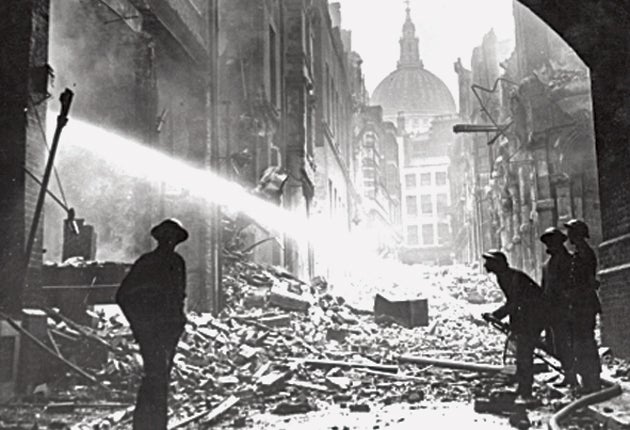The Timeline: The Blitz

7 September 1940
In the run up to 7 September, the night the Blitz began, the Luftwaffe had targeted RAF airfields and radar stations for destruction in preparation for the German invasion of the island. When these plans were put on hold, Hitler turned his attention to destroying London. At around 4pm, 348 German bombers escorted by 617 fighters blasted London. Two hours later, using the fires set by the first assault as a guide, a second group of raiders attacked the capital and carried on bombing until 4:30am the following morning. The attack started in the East End before moving to central London leaving more than 430 dead and more than 1600 people badly injured.
15 November 1940
The Luftwaffe returned to London and marked the full moon with the biggest raid of the month. Almost every borough was hit using a new bomb that Londoners nicknamed Satan, which used delayed action. The National Portrait Gallery was hit, as was Westminster Abbey and Euston Station. The previous night, Coventry was also hit in a raid that lasted more than 10 hours and left much of the city devastated.
29 December 1940
The heaviest night of bombing in the Blitz. More bombs were dropped than on any other night causing over 1400 fires including six that were classed as conflagrations due to their severity – one of which covered half a square mile. Eight churches designed by Sir Christopher Wren were destroyed, only the walls of the Guildhall remained and many hospitals and stations were hit. The famous photograph by Herbert Mason of St Paul's Cathedral showing through smoke, appeared on the front page of the Daily Mail on 31 December with the caption "War's Greatest Picture".
10 May 1941
At around 11pm, air raid sirens were heard across the city and the first explosions occurred. Another assault was launched claiming 1,486 lives and destroying 11,000 houses. More than 500 aircraft dropped high-explosive and incendiary bombs that changed the face of the capital. Almost all the major stations were damaged as were 14 hospitals. The Houses of Parliament, Westminster Abbey, the British Museum and Waterloo station were also hit.
11 May 1941
After 10th May, Hitler abandoned the Blitz and most of the Luftwaffe were re-assigned east in preparation for Germany's invasion of Russia. However, sporadic raids, using increasingly larger bombs, continued for several years. The end of the Blitz saw a return of evacuees and the start of the reconstruction of London – even though building materials were in short supply. The docks had been devastated, as had many industrial and residential districts, including the historic heart of the City.
Subscribe to Independent Premium to bookmark this article
Want to bookmark your favourite articles and stories to read or reference later? Start your Independent Premium subscription today.

Join our commenting forum
Join thought-provoking conversations, follow other Independent readers and see their replies